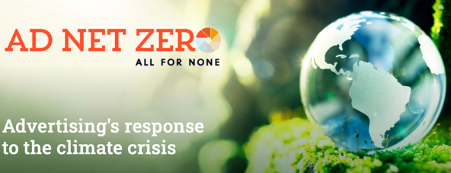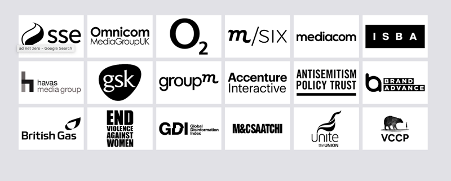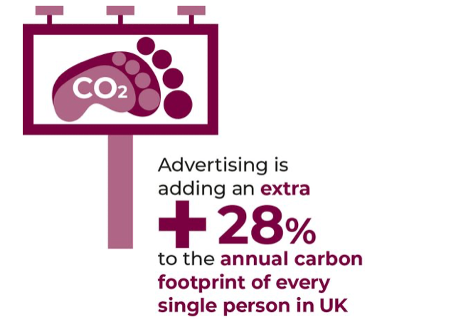The Good, the Bad and the Ugly: a review of adland climate initiatives
The climate crisis is an era-defining issue, and in the advertising and marketing industry many professionals, particularly younger people, are feeling a deep disconnect with their concerns over climate breakdown and working for clients who are major polluters.
Like many other industries, adland appears to have taken steps towards addressing advertising’s role in climate breakdown. But has it really? With the Advertising Association holding its Ad Net Zero annual summit this week (9-10 November), we’ve done a timely review into some of the climate initiatives touted by the industry.*
From mainstream initiatives like AdNetZero, to insider collectives like Purpose Disruptors, and climate pledges run by campaign organisations like Clean Creatives or Comms Declare, it is worth looking deeper into what each of these stands for and whether and how they are addressing the most pressing issue for professionals in the creative industries, namely cutting ties with high-carbon clients including fossil companies, carmakers and airlines.
*For the purpose of this overview, we only focus on sector-wide campaigns and initiatives rather than individual agencies despite a few notable exceptions.
Mainstream initiatives: PR for the ad industry?
The UK Advertising Association’s Ad Net Zero
Ad Net Zero calls itself “Advertising’s response to the climate crisis”. It is the UK Advertising Association’s flagship initiative, launched in 2020, to reduce carbon emissions across the sector. Its members in the UK include household agency names like Adam & Eve, AMV BBDO and Havas Media as well as a range of press groups, media agencies and global corporations. The initiative is organised around 5 main action points: business operations, production, media choice, awards and events and using advertising’s influence to promote sustainable change (specifically delivered by the #ChangeTheBrief Alliance).
The mission of the programme is to reduce the carbon impact of the industry’s operations to “real net zero” emissions by the end of 2030. To do so, the Advertising Association offers support and consultancy to agencies, via its AdGreen Calculator, on measuring carbon emissions associated with offices and travel for meetings, the production and the placement of adverts.
The targeted carbon reductions strictly concern the business operations of the sector, including the development, production and media placement of advertising, but do not apply to the emissions associated with the increase in sales of carbon heavy ‘stuff’ generated by advertising. This issue has been flagged by the industry insiders group Purpose Disruptors in their latest report ‘Advertised Emissions’:
“To date, none of the existing net zero or climate commitments by advertising and marketing communications agencies include the impact in relation to the creative or promotional work they produce. The reason why they exist. ”
The Advertised Emissions report highlights the disproportionate carbon impact associated with what the clients’ agencies promote. This impact is estimated to be about 186% larger than the total CO2e emissions resulting from the UK agencies’ total operations (estimated at one million tonnes), according to the Advertising Association’s own figures.
Ad Net Zero: a greenwash front?
The Ad Net Zero Global Summit - which will be held in London this 9-10 November 2022 - is the official gathering for adland’s green PR. The summit spans two days and includes various keynote speeches from ad agencies’ leaders, and heads of sustainability programmes at different corporations, who essentially congratulate themselves about how good they are doing at taking action on the climate.
Overall, the premise of the Ad Net Zero programme as ‘advertising’s response to the climate crisis’ is deeply flawed. As mentioned above, the programme aims to reduce the carbon impact of the ad industry’s own operations. But, by ignoring advertising’s bigger impacts through promoting overconsumption, it is tinkering round the edges, meaning that Ad Net Zero functions as the ad industry’s biggest work of greenwash yet.
IPA Media Climate Charter
Created by agency members of the IPA Media Futures Group, the Media Climate Charter is part of the Institute of Practitioners in Advertising. The IPA sets protocols for the UK industry's best standards, and provides advice and guidance for professionals. Similar to the Advertising Association’s Net Zero programme, the Media Climate Charter offers targeted support for media agencies willing to reduce their carbon impact across their business operations, outputs and over the industry as a whole by promoting sustainable behaviour change (via research, education and events). The initiative provides guidance to media agencies in the form of tools and resources to both measure and reduce their carbon emissions.
Similar to Ad Net Zero, the Media Climate Charter does not address the vast majority of emissions produced by the industry, namely, advertised emissions.
Conscious Advertising Network
The Conscious Advertising Network is a UK based coalition with an international remit that brings together 150 advertisers, agencies, tech providers and big companies. The mission of the network is to, “break the economic link between advertising and harmful content”. CAN brings together seven manifestos, including one chapter on sustainability, aimed at clients for adopting in their briefs with agencies. The guidance regarding sustainability includes recommendations on signing up to accreditation schemes and pledges (e.g. Ad Net Zero, BCorp Certification and the Race to Zero campaign) and joining the #ChangeTheBrief alliance to promote sustainability values through briefs with clients. It also has specific guidance on ad content, in terms of promoting sustainable behaviours and ensuring that the claims being made are evidence-based.
CAN’s remit does not include breaking the economic link between ad agencies and their fossil fuel clients, however. Members of the coalition include agencies who still work for fossil firms and engage in greenwashing advertising including Omnicom Media Group UK (agencies include OMD (AGL, Chevron, Shell, BHP) and PHD (Shell)), VCCP (Easyjet), Havas Media (Phoenix Petroleum Philippines), M&CSaatchi (Origin Energy) and Mediacom (Shell). Other members are British fossil energy companies SSE and British gas.
The ‘good guys’: pledges and ‘insider initiatives’ to drop fossil clients
Among the various initiatives, a few are in the form of pledges that creatives in the industry can sign on to declare that their work doesn’t support fossil companies.
Clean Creatives
Clean Creatives is a US-based initiative with a global outreach created by the campaign group Fossil Free Media. Their mission is bold and impactful: to get people working in the creative and ad industries to sign their pledge committing to turn down any work with fossil clients, including trade associations and front groups working for the fossil industry. As of September 13 2022, 397 agencies are signatories of the fossil free pledge. The campaign group lists on its website precisely which companies and organisations are considered ‘fossil clients’.
In 2021, Clean Creatives published its F-list featuring 90 ad agencies and PR companies based in North America, Europe, and Australia working for Big Oil. In September 2022, Clean Creatives updated its F-list to include agencies based in Latin America and the Asia Pacific regions; the F-List now accounts for 239 agencies from major industry holding companies and independent companies working for fossil clients.
The campaign group also supports whistleblowing efforts in the industry by partnering with AdLeaker to shed light on how the fossil fuel industry uses PR and ad professionals to advance their agenda.
Comms Declare
Comms Declare is an Australian campaign group that has a very similar mission to that of Clean Creatives. With their motto ‘Aware, Declare, Act’, they aim to get professionals from the communication, media, creative and advertising industries to declare that their work is not supporting activities, organisations or individuals that promote:
the growth of fossil fuels
high greenhouse gas pollution as ‘business as usual’
deception, distraction or spin around science or climate actions.
Their members are made up of both media and ad agencies as well as individuals who have taken on the organisation’s pledge. Their website also includes a list of companies not to work with, mainly listing corporations in the extractive industries (oil, gas and mining). It also showcases names of agencies with clients in the fossil industries.
Creatives Climate Disclosure
Creatives Climate Disclosure takes a different approach from the two groups listed above. The idea behind climate disclosure stems from the common practice of financial disclosure reporting, whereby companies publicly disclose financial information about their business. With rising climate concerns, these reports now feature the climate risks associated with their financial operations. This initiative gives the opportunity for creative and advertising professionals to do the same for their business.
The initiative is supported by both agencies and individuals in the profession. The majority of the disclosure reports uploaded on the organisations’ page are exclusively written by companies whose core mission is of social/environmental value (except for the ad agency Elvis).
Purpose Disruptors
Purpose Disruptors is a collective of advertising professionals with a mission to change the advertising industry to be a force for good to tackle the climate crisis. They cover a wide range of activities including monthly meet ups, virtual events, climate crisis summits, action studios and workshops. Their approach also includes working closely with industry bodies, networks and brands.
The collective has shone a light on new metrics, ie. the Ecoeffectiveness framework, which they argue is necessary to measure the true impact of the advertising sector. Their publication Advertised Emissions, which was launched at COP27, is a call for advertisers to account for the emissions resulting from the increase in sales generated by advertising, in particular those for carbon-intense clients such as fossil fuel companies, carmakers and airlines. The report stresses how this represents the greatest challenge for the industry which is not currently accounted for by any of the big advertising agencies’ net zero commitments and climate pledges, such as the Advertising Association’s Ad Net Zero. A similar approach is taken in the report Advertising Climate Chaos published by the New Weather Institute and Greenpeace, which estimates the increased emissions resulting from the advertising of cars and aviation.
One of Purpose Disruptors activities is to coordinate the #ChangeTheBrief alliance, an initiative set up by the ad agency Mindshare (whose client includes fossil giant BP), which consists of a not-for-profit partnership between agencies of every size and type and their clients, learning and acting together on how to promote more sustainable values and positive behaviour changes. As a large industry collaboration, this includes progressive voices, but current members of the #ChangeTheBrief alliance also include Havas Group, M&C Saatchi, Omnicom and WPP who have ties with the fossil fuel industry.
The ‘climate-friendly’ agencies
As listed above, there are mainly two types of climate-friendly advertising agencies: the more traditional agencies who choose to willingly turn down fossil clients and those, often smaller ones, whose mission is socially oriented. Among the latter, we find agencies like Glimpse, Climate Designers, Futerra or Creatives for Climate who are all about using the tools of communication and marketing to drive positive change in relation to the climate crisis. Those organisations are based on the premises that the climate crisis is a communication challenge and that creatives have a role to play in spurring sustainable behaviour change.
To showcase their positive impact on the world, some agencies are publicly displaying their BCorp certification and calling on others to follow the lead. However, as noted in the case of Havas London, which was awarded the certification despite having clients in the fossil industry, the standard fails to account for ad agencies’ work with fossil clients. Analysis of the BCorp standard points to the many problems attached to the certification itself which makes it unfit to be used as a marker of true sustainability for the ad industry.
Analysis: is there a best approach?
The evidence is clear. The bulk of advertising and communication agencies’ carbon emissions comes from the sales generated through the companies these agencies work for. The impact is even larger when it comes to promoting companies whose business is directly related to the production and burning of fossil fuels.
As illustrated in this concise review, most mainstream ad industry climate initiatives are mainly focussed on measuring and reducing emissions from media production and the running of agencies rather than the “advertised emissions” generated by the increase in sales. It is therefore unsurprising that many agencies who are serving the interests of the world’s most polluting industries, are simultaneously supporters or members of initiatives like Ad Net Zero, the Conscious Advertising Network or Change the Brief alliance.
Groups like Purpose Disruptors are actively campaigning for these mainstream initiatives to account for emissions associated with their clients. Until this is the case most of these zero carbon targets and initiatives are actively serving as a ‘green front’ for those agencies.
The promotion of sustainable behaviour change through advertising is also a recurring focus among adland’s climate agenda. Despite its importance, it does however feel hypocritical for agencies to act as ‘agents of sustainability’ when they themselves are helping to boost sales or greenwash the image of major fossil giants and high-carbon companies.
Overall, there is a clear need for bolder, faster action to shift the advertising industry to zero carbon emissions. Ineffective initiatives such as Ad Net Zero must be called out for what they are - greenwash that acts as a stalling tactic for more money-making while climate breakdown continues to accelerate. Until advertising professionals and agencies drop ties with climate-harming clients, including other high-carbon clients like carmakers and airlines, adland can kiss goodbye to net zero.
Grassroots pressure to #BanFossilAds
Ultimately, for change to happen at scale it requires pressure from both outside and inside the industry. Grassroots campaigns calling on Governments to end fossil adverts are necessary for agencies to feel the pressure to change their business models. Coordinated insider action is also fundamental for creating ripples of change in the industry. While groups like Purpose Disruptors are doing necessary work on exposing the problem and pushing mainstream standards to shift in the right direction, a lot more needs to be done in terms of facilitating grassroots, employee-led campaigns within each of those industries working with fossil clients to demand change at the top-level.








